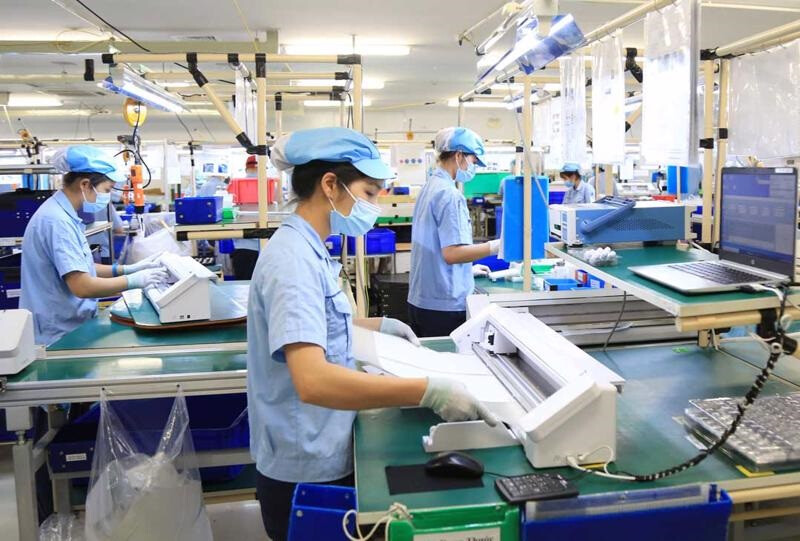
In the first five months of 2025, Vietnam has rapidly emerged as Singapore's 8th largest export market, demonstrating a deepening economic relationship between the two countries. This marks a four-place jump from the same period last year, supported by Singapore's total exports to Vietnam reaching S$11.7 billion (approximately US$9.06 billion). This growth is interpreted as a significant sign of the changing economic landscape in Southeast Asia and the restructuring of regional supply chains.
Record Trade Volume Increase and Analysis of Key Products
According to a statement from Vietnam's Ministry of Industry and Trade, data from Enterprise Singapore shows that in May alone this year, the total import-export trade volume between the two countries reached S$3.16 billion, a 27.76% increase year-on-year. Notably, Vietnam's exports to Singapore increased by 27.1% to S$869.3 million, while Singapore's imports from Vietnam surged by 28.02% to nearly S$2.3 billion.
Even more striking, the two-way trade volume in the first five months of this year totaled S$16.23 billion, recording an astonishing growth rate of 28.07% year-on-year. Of this, Vietnam's exports to Singapore soared by an impressive 37.7% to nearly S$4.53 billion, and Singapore's imports from Vietnam increased by 24.7% to S$11.7 billion.
Dominant Shift in Export Products: Among Vietnam's most prominent export items to Singapore are machinery, equipment, mobile phones, parts, and spare parts. In May, this product group accounted for over 94.4% of Vietnam's total exports to Singapore. This suggests Vietnam's evolution into a production base for high-value electronic products and components. In contrast, previously major export items such as reactors, boilers, machine tools and related parts, and glass and glass products showed slight increases or decreases.
Other export items that showed significant growth include alcoholic beverages and drinks (up 104.48%), optical instruments, measuring equipment, medical devices, watches, musical instruments and related accessories (up over 52.58%), and plastics and plastic products (up over 48.43%). This indicates that Vietnam's industrial structure is diversifying and gaining competitiveness in certain high-growth industrial sectors. Conversely, some items such as salt, sulfur, soil and stone, gypsum, lime and cement (down 25.29%), and aquatic products (down 17.85%) showed a decrease.
Changes in Import Products: For products imported from Singapore to Vietnam, in May, the group of machinery, equipment, mobile phones, parts, and spare parts increased by 61.28%, and the group of reactors, boilers, machine tools and equipment, and related parts surged by 92.44%. This signifies robust demand for capital goods and intermediate goods to expand Vietnam's industrial production capacity. Meanwhile, the gasoline and petroleum products group decreased by 12.28%, suggesting a potential shift in the energy import structure.
Analysis of Key Growth Drivers
Several complex factors have contributed to Vietnam's rise as Singapore's 8th largest export market.
FDI Attraction and Manufacturing Competitiveness Enhancement: Over the past few years, Vietnam has actively attracted foreign direct investment (FDI), strengthening its manufacturing base. In particular, global electronics companies such as Samsung and LG have established large-scale production bases in Vietnam, significantly improving the production capacity of electronic components and related products. These companies are utilizing Vietnam as a major production hub in Asia, and Singapore serves as a key export channel and re-export hub for products manufactured in Vietnam.
Strategic Geographical Advantage: Vietnam is located in the heart of Southeast Asia, geographically close to Singapore. This contributes to reducing logistics costs and shortening transportation times, serving as a crucial factor in boosting trade between the two countries.
Free Trade Agreement (FTA) Effects: As ASEAN member states, Vietnam and Singapore benefit from regional economic integration such as the ASEAN Free Trade Area (AFTA). Tariff reductions and the easing of non-tariff barriers have significantly contributed to promoting trade between the two countries. Furthermore, broader FTAs like the Regional Comprehensive Economic Partnership (RCEP) have helped to further deepen trade relations between the two nations.
Global Supply Chain Restructuring: Amidst the US-China trade dispute and the COVID-19 pandemic, many companies have sought to diversify their production bases, which were previously concentrated in specific regions. In this process, Vietnam emerged as a new production hub based on its stable political environment, affordable labor, and open investment policies. The increase in trade with Singapore can be interpreted as a result of this supply chain restructuring.
Digital Economy Growth: Singapore plays the role of a digital hub in Southeast Asia, and Vietnam's digital economy is also rapidly growing. Increased cooperation in digital sectors such as e-commerce, IT services, and fintech is driving the diversification of trade items between the two countries. In particular, the increase in exports of electronic components and equipment can be seen as reflecting the growth of this digital economy.
Future Outlook and Implications
Vietnam's leap to become Singapore's 8th largest export market sets a new milestone in the economic relationship between the two countries. This clearly demonstrates Vietnam's growing stature in the global supply chain, while also signifying Vietnam's increasing importance as a major trade partner for Singapore.
In the future, Vietnam is expected to further accelerate its transition to high-value-added industries, and Singapore will likely seek to expand intra-ASEAN trade and investment by leveraging Vietnam's growth potential. Particularly, if Vietnam's advanced manufacturing capabilities and Singapore's technological prowess and service industry capabilities are combined, the two countries can achieve sustained economic growth through a mutually complementary relationship.
Vietnam's rise in Singapore's export market ranking is a facet demonstrating the dynamism of the Southeast Asian economy, and continuous attention is needed regarding future economic cooperation and changes in trade flows among countries in the region. Beyond a simple trade relationship, Vietnam and Singapore have the potential to create greater synergy through a strategic partnership. If this trend continues, Vietnam may soon enter Singapore's top 5 export markets.
[Copyright (c) Global Economic Times. All Rights Reserved.]





























